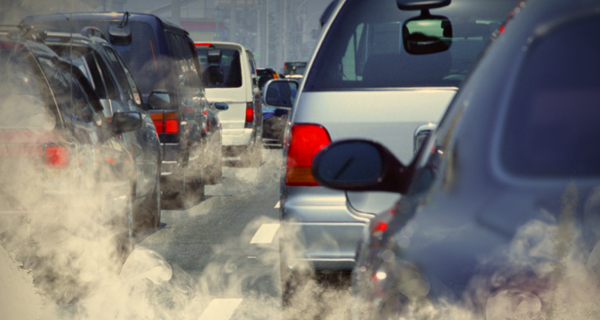
By Chris Harto, Senior Policy Analyst, Transportation and Energy, Consumer Reports
The U.S. has unveiled a new set of rules to reduce harmful air pollution and greenhouse gas emissions from new cars and light-duty trucks.
The Environmental Protection Agency (EPA) announced final emissions standards for vehicles for model years 2027 through 2032 on March 20. They build on the standards EPA put in place in 2021 for model years 2023 through 2026.
These combined rules are expected to deliver over $2 trillion in consumer savings and reduce climate pollution by over 12 billion tons through 2050.
- EPA’s emissions standards provide a variety of ways for automakers to comply, and will deliver more choices for cleaner, money-saving vehicles.
EPA’s standards are technology neutral. Automakers will have broad flexibility to choose whatever mix of vehicle technologies they want to meet performance-based standards. This can include reducing the emissions from gas-powered vehicles, as well as offering conventional hybrid vehicles, plug-in hybrids, and battery electric vehicles. We expect different automakers to choose different mixes of technologies to meet these standards.
With that in mind, we have modeled four different scenarios representing different strategies for complying with the new standards. These scenarios include one in which automakers choose to use only the deployment of increasing numbers of battery electric vehicles to meet the standards (Maximum BEV), two mixed compliance pathways (Light Hybrid and Balanced), and one compliance pathway that relies heavily on conventional and plug-in hybrid vehicles (Heavy Hybrid). We designed these scenarios to represent what we consider to be four of the most likely automaker compliance strategies.
We estimate that the full fleet of new light-duty vehicles in model year 2032, on average, will most likely resemble the Balanced scenario. Accordingly, we use this scenario as our central estimate for the benefits of the rule. This scenario matches the historical pace of improvement in emissions reductions for internal combustion engine (ICE) light-duty vehicles (including conventional hybrids) of about 2% per year, along with a 20% penetration of plug-in electric vehicles (PEVs). This matches the relative market share of PHEVs and battery electric vehicles (BEVs) in 2022 and 2023. In addition, states that follow California’s zero emission vehicle standards limit PHEVs to a maximum of 20% of their compliance fleet starting in 2026.

- EPA’s latest emissions standards will deliver around $1.5 trillion in consumer savings through 2050
Regardless of the compliance pathway taken, EPA’s standards will deliver massive consumer savings that exceed $1 trillion for the 2027 to 2032 rule and over $2 trillion for both rules combined from 2023 to 2032. Most of these savings come from reduced fuel consumption, but these values also consider expected changes in vehicle prices and reduced maintenance costs of electrified vehicles. All values are discounted to the present value using the government’s standard 2% discount rate for societal benefits.

- EPA’s latest emissions standards will deliver around $9,000 in lifetime savings from the average new vehicle in model year 2032
Large aggregate savings also translate directly into large lifetime per-vehicle savings. The average new vehicle in model year 2032 is expected to deliver about $9,000 in total lifetime savings under the Balanced scenario compared to the average new vehicle under the model year 2026 status quo. This value for model year 2032 vehicles is over $13,000 compared to the average new vehicle under the model year 2022 status quo.

- EPA’s standards are a big deal for the climate
These standards are one of the most significant regulations in US history to address climate change. Through 2050, the new standards for model years 2027 to 2032 will yield over 7 billion tons of emissions reductions, on top of 5 billion tons that were already going to be delivered by the 2023 to 2026 rule. These savings even include the expected increase in industrial emissions from manufacturing battery electric and plug-in hybrid vehicles, based upon emissions estimates from the current version of Argonne National Laboratory’s GREET model.

- EPA’s standards are not even close to an “EV mandate”
Many opponents have insisted that EPA’s standards amount to a “EV mandate.” That couldn’t be further from the truth. While these standards will drive innovation in the automotive industry and greater deployment of clean cars, they will in no way mandate the purchase of any specific type of vehicle. In addition, based on our modeling of the compliance scenarios we’ve outlined, we estimate that battery electric vehicles will only make up between 15% and 19% of the light-duty vehicle fleet by the end of 2032, and could be as low as 10% under the Heavy Hybrid scenario.
This means that no matter what pathway automakers take, if they merely comply with these rules, and don’t go beyond them, more than 80% of Americans will still be driving gasoline-powered vehicles in 2032. While it is certainly possible that only a small minority of Americans will want to own battery electric vehicles by this date, the rules leave open the opportunity for the market to drive a faster pace of EV adoption.

- These Rules are a Clear Win-Win for Consumers and the Climate
These rules show that—with smart policy—it’s possible to make a big dent in climate pollution, while enhancing consumer choice, and putting money back into consumers’ pockets.
